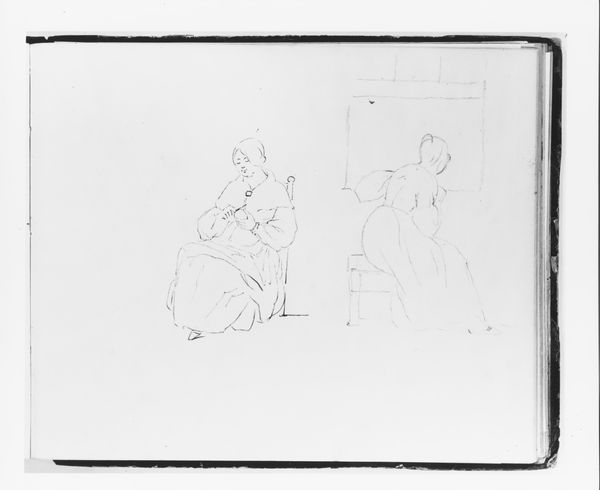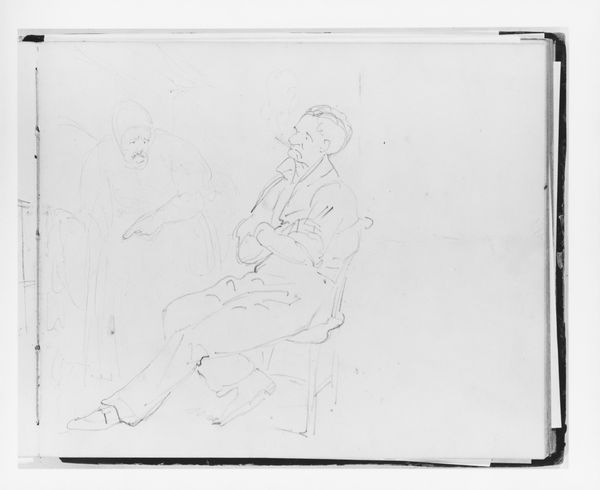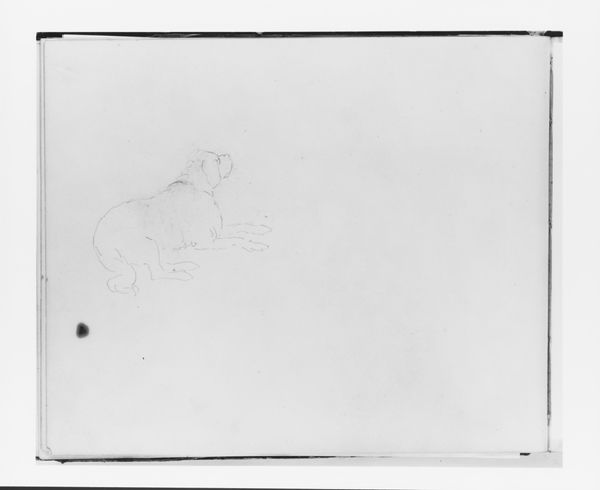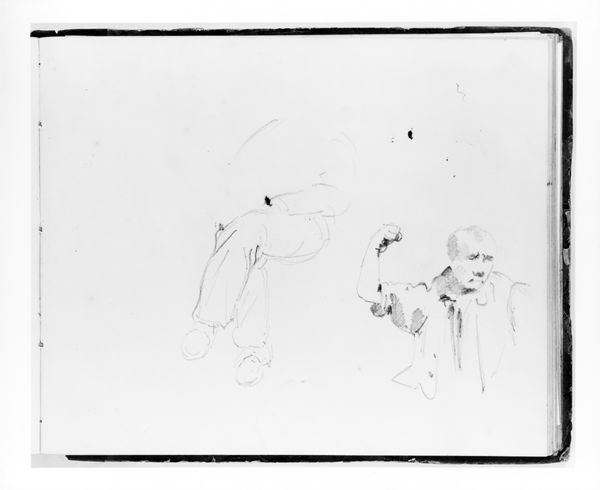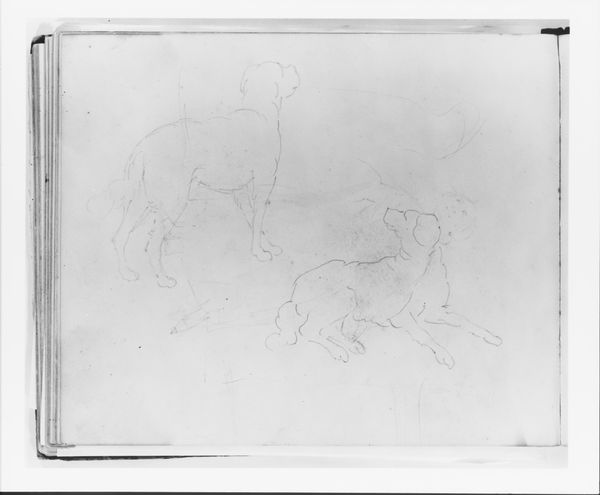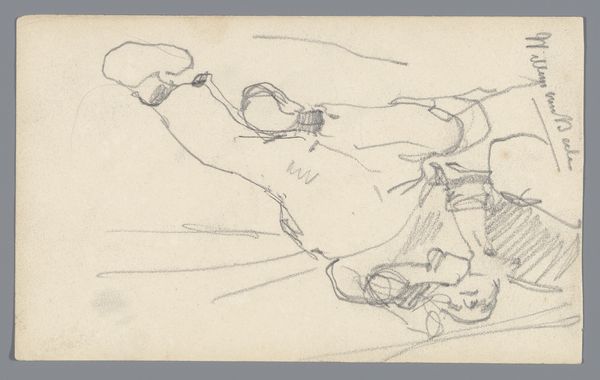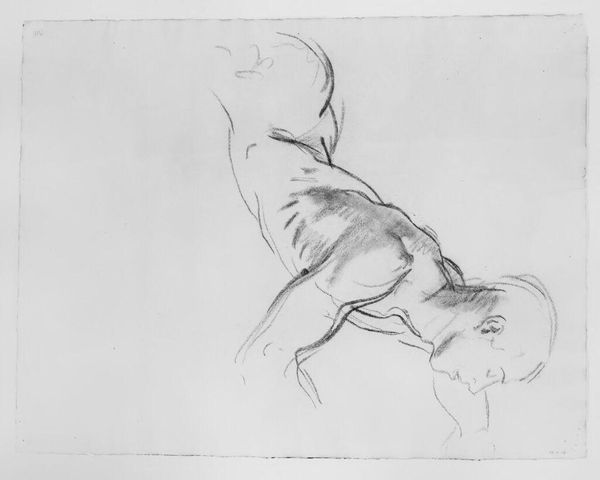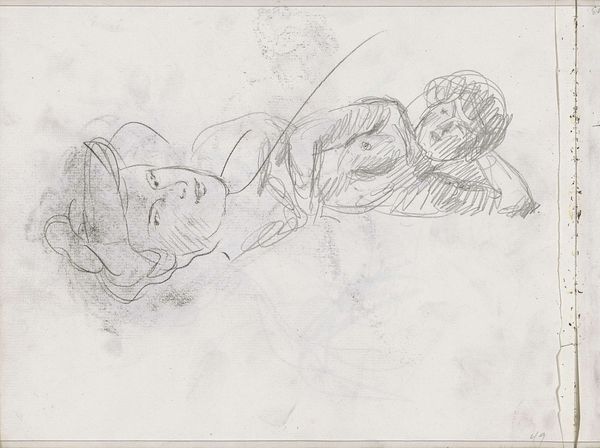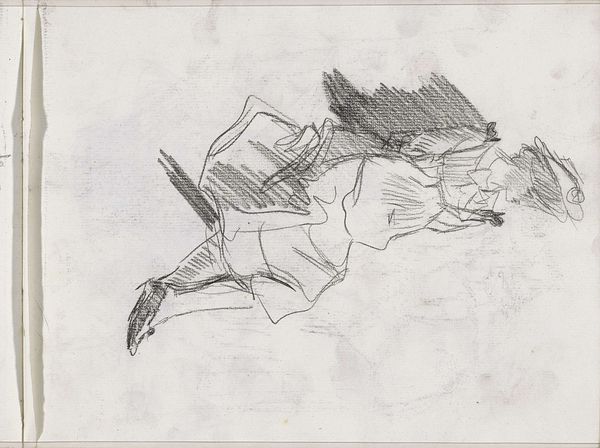
Man Sleeping in a Rowboat (from Sketchbook) 1835 - 1839
0:00
0:00
drawing, pencil
#
portrait
#
drawing
#
pencil sketch
#
figuration
#
romanticism
#
pencil
#
men
#
genre-painting
Dimensions: 6 5/8 x 8 in. (16.8 x 20.3 cm)
Copyright: Public Domain
Editor: Here we have Francis William Edmonds’ pencil drawing, "Man Sleeping in a Rowboat," from around 1835-1839. It looks almost unfinished, like a quick sketch, but the subject is quite peaceful. What stands out to you in this piece? Curator: As a materialist, I'm immediately drawn to the labor implied in both the scene depicted and the creation of the artwork itself. The drawing, a product of Edmonds' hand and the pencil's interaction with paper, reduces a potentially romantic subject to its barest essentials through this act of material engagement. How do you interpret the depiction of rest here in relation to labor? Editor: Well, the man’s clearly exhausted! Maybe it suggests that even leisure is a product of labor. He's sleeping on the job, almost. It feels like a subtle commentary. Curator: Precisely. And consider the pencil itself - a manufactured object, democratized and accessible. Edmonds’ choice to use it challenges the hierarchy between fine art and everyday experience. Is he ennobling the common man, or documenting labor’s fatigue through accessible means? What does that imply about its original audience? Editor: That’s a fascinating point. By using humble materials to portray a worker, he closes the gap between art and lived experience. Was this sketch intended for public display or more personal reflection, affecting how viewers at the time received it? Curator: The ambiguity in its presentation becomes crucial, because the context of reception affects how this subject matter of common laborers might’ve been regarded during its production. Whether destined for a patron or part of a collection, how it circulated tells its impact as a form of capital. Editor: I hadn't considered the distribution aspect before. Seeing art as embedded in the means of its production and viewing has completely changed how I understand this simple drawing. Curator: Exactly. Thinking about art in terms of process, materials, and the society that produces and consumes it adds layers of meaning, making us consider labor and commodification in Edmonds's time.
Comments
No comments
Be the first to comment and join the conversation on the ultimate creative platform.

